The Club Devoted to Celebrating Great Britain’s Great Puddings
At this pudding-themed hotel, a Pudding Master presides over dessert feasts.
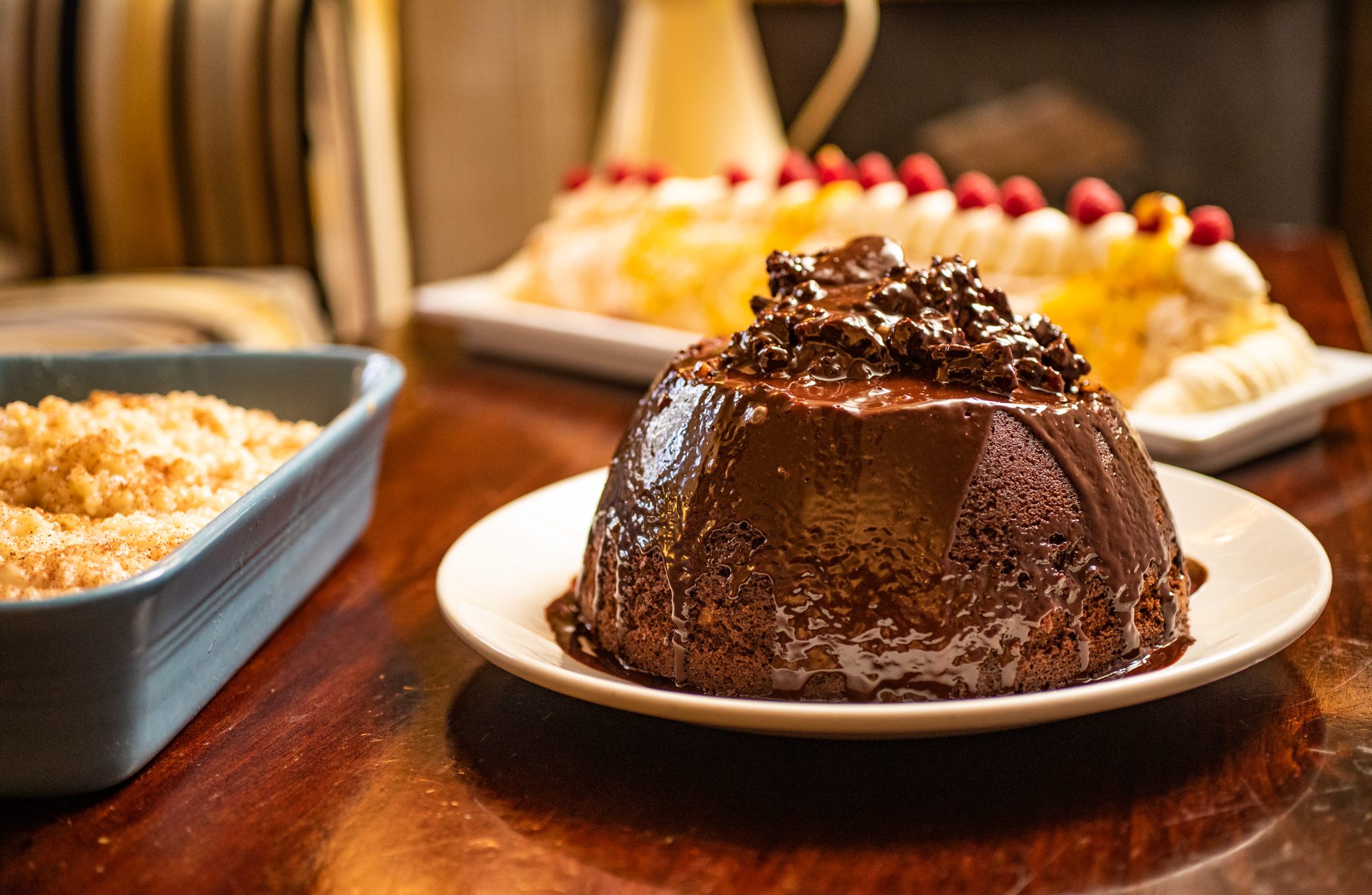
From the outside, the Three Ways House Hotel looks like a typical bed and breakfast in Britain’s Cotswolds region. Made out of the local golden stone and engulfed in ivy, it was built in the late 19th century as a doctor’s house. Nothing about its distinguished exterior hints at the pudding extravaganza that happens here every Friday night.
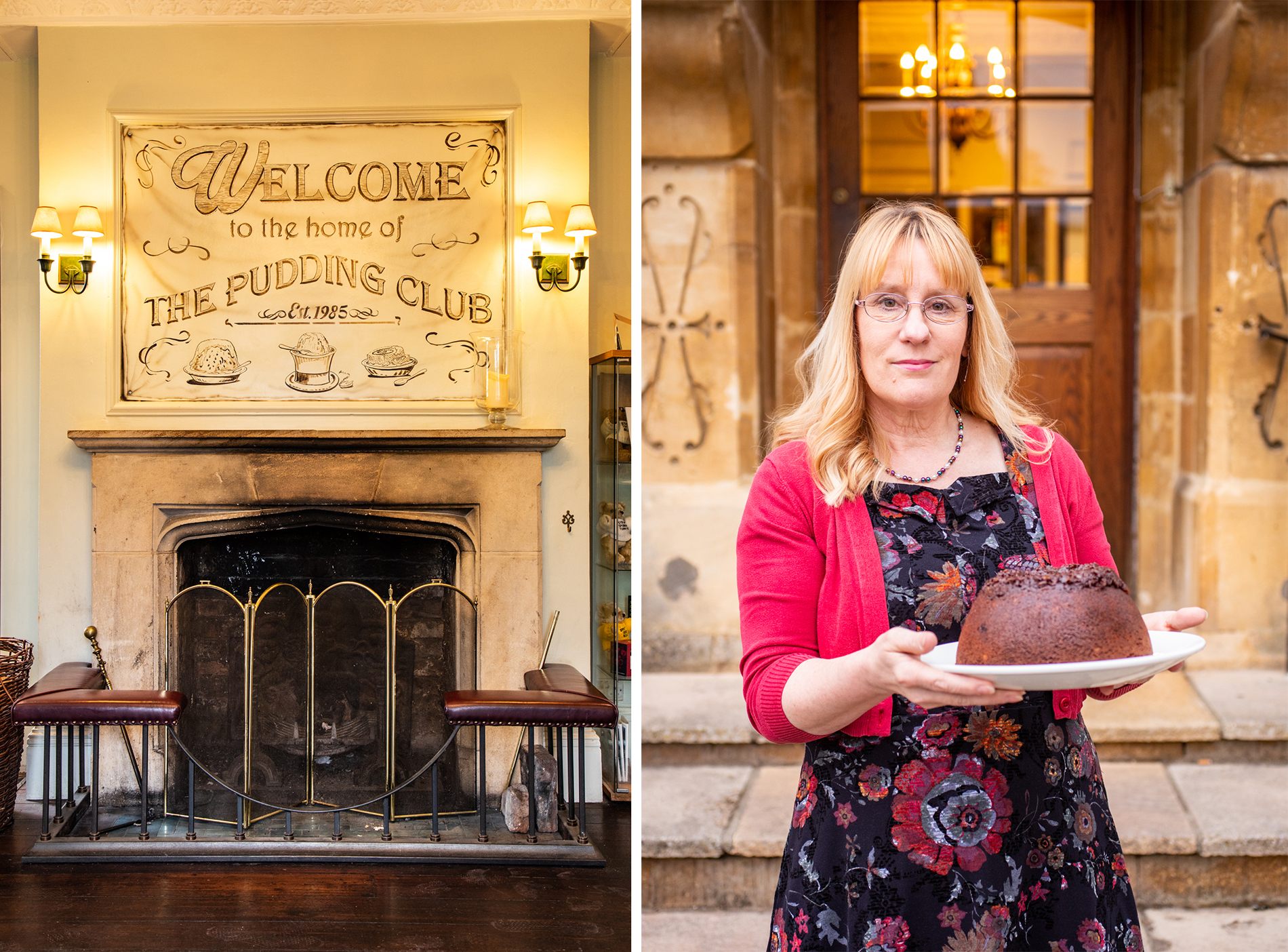
The Three Ways House, after all, is home to the Pudding Club, an institution with a self-proclaimed mission of preserving the “great British pudding.” Since 1985, dozens of dessert-lovers from around the world gather weekly to gorge on a feast of traditional British sweets, presented with pomp by the hotel’s resident Pudding Master. On one recent night, the event began with 60 people piled into the lounge, clutching glasses of mimosa-like buck’s fizz. A blackboard displayed the order of service: one necessarily light main course, followed by seven different puddings.
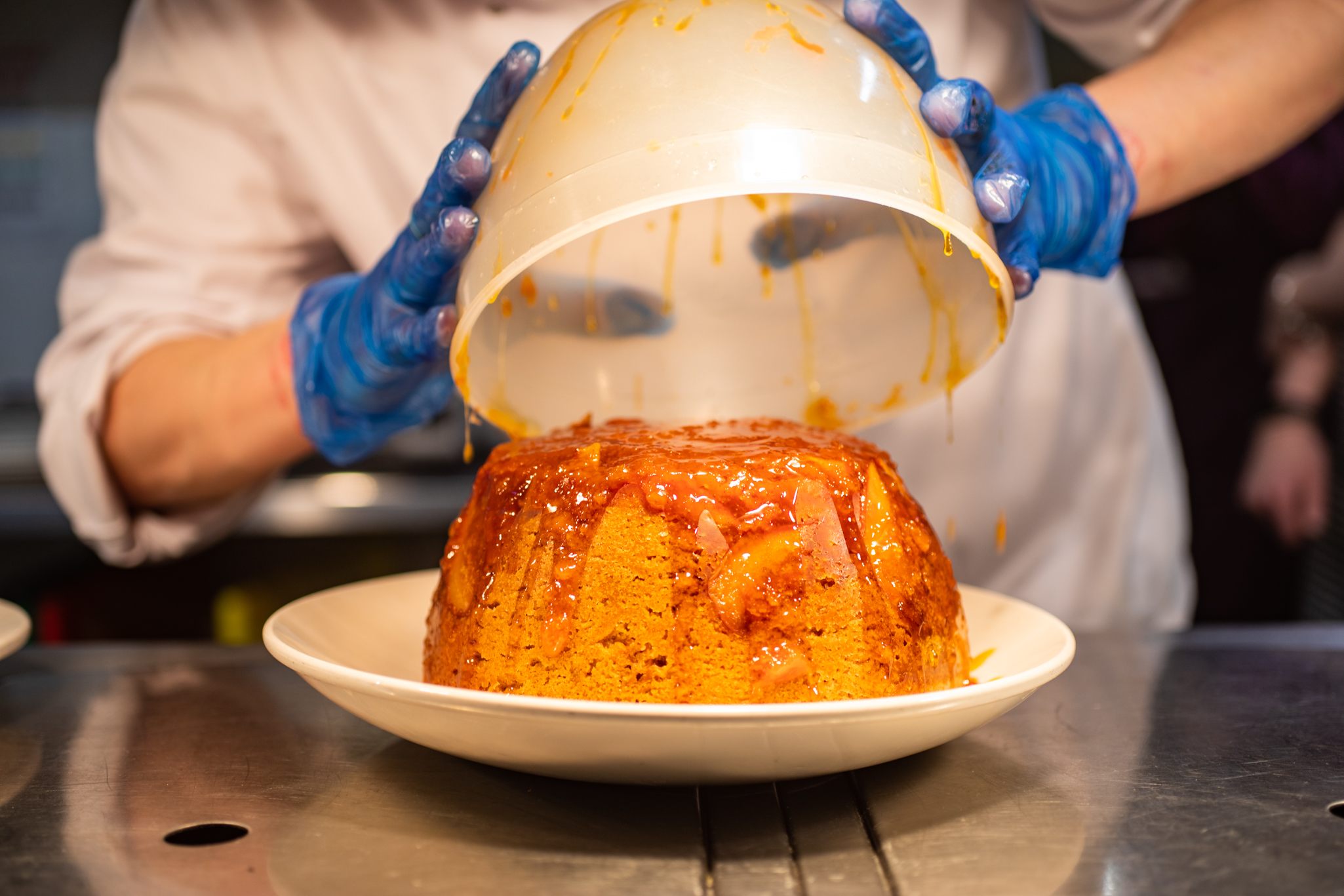
Pudding is a word with many definitions. In North America, pudding refers to a thick, smooth, custard-like dessert. But in Britain, a pudding is a dish traditionally made with suet, or hardened animal fat, along with flour and fruit for sweetness. Then, it’s steamed for several hours. This type of pudding can be sweet or savory, and thanks to their inexpensiveness and simplicity, they’ve been a British favorite for centuries. But the word can also apply to dessert in general, and there’s more than steamed pudding on the menu at the Pudding Club.
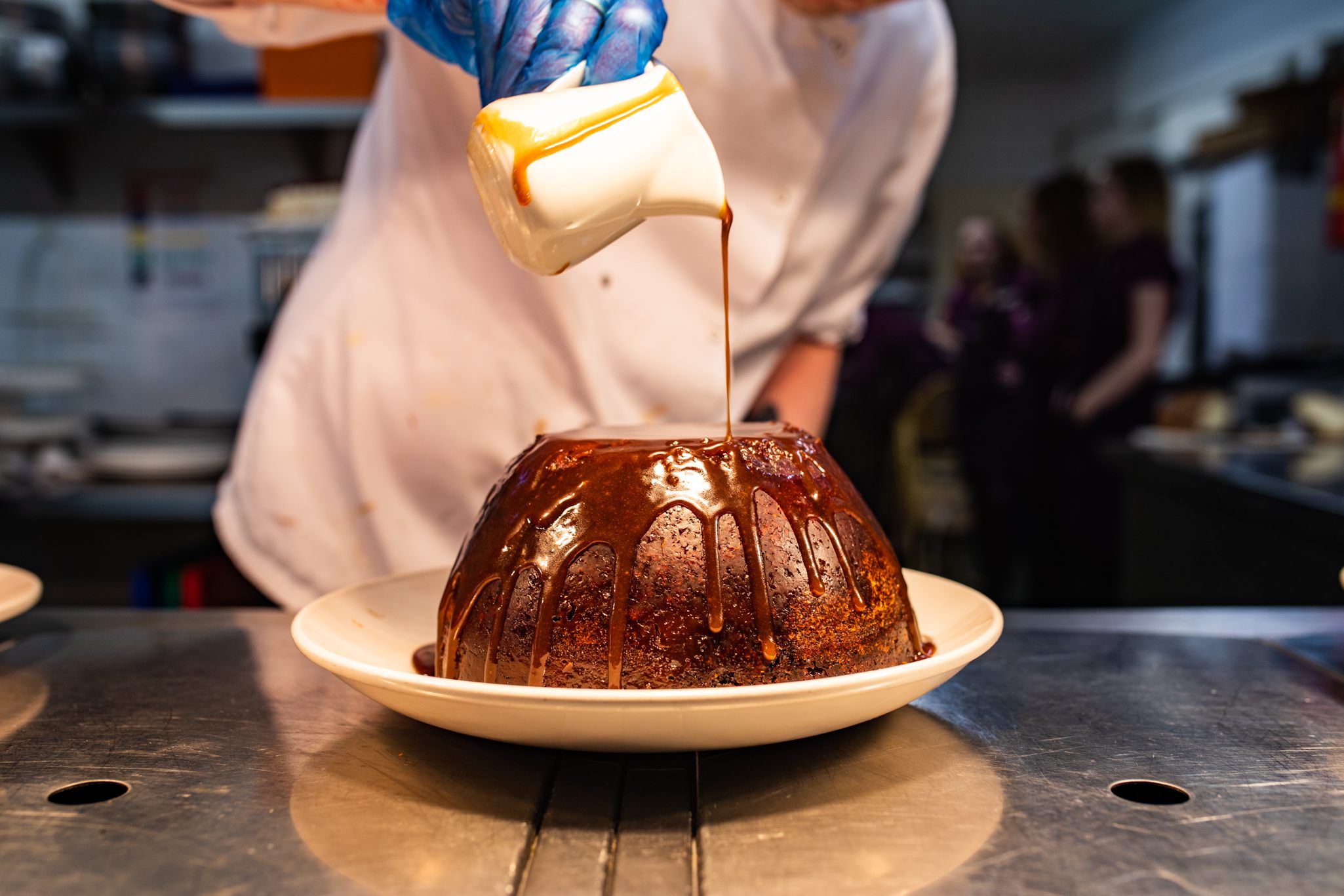
The Cotswolds area is known for eccentric activities, such as Morris dancing and the perilous custom of cheese-rolling. The Pudding Club fits right in. But its origins are relatively recent. In 1985, fed up with the sad dessert trolleys so common in hotel restaurants at the time, the then-owners of Three Ways House eschewed the typical black forest cake and fruit salads. Instead, they got a group of friends together to eat inordinate amounts of pudding. These Friday night feasts became tradition, and so the Club was born.
These days, the role of Pudding Master belongs to Lucy Williams. The assistant manager of the Three Ways House, she’s a tall, slight woman with the booming voice of a town crier. She doesn’t look like she eats a lot of pudding, “but my dental bill tells another tale,” she says. Her job was to brief us on the rules of the Pudding Club. Each pudding course would be paraded out of the kitchen and arranged at a central table. Their entrance required plenty of encouraging applause and cheering. After all, “puddings have feelings,” Williams says, before adding that anyone leaping up to serve themselves before their table was called would be shooed back to their seat.
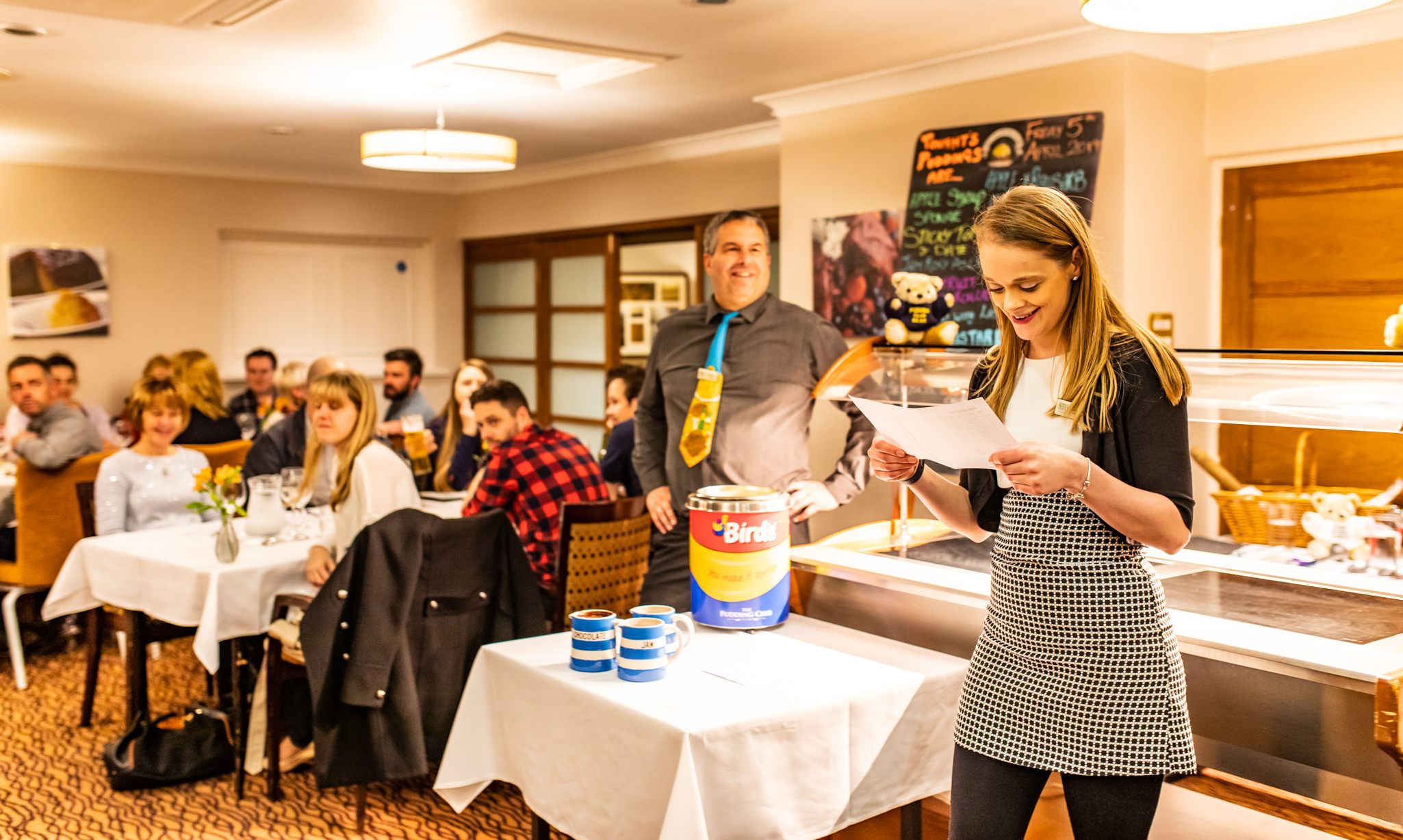
Thoroughly briefed, we filed into the dining room, where couples of all ages sat opposite one another. Entire families settled behind the long tables covered in white tablecloths. Many guests informed me that they heard about the Pudding Club from friends and family who graduated, with the certificate to prove it, from the seven-course feast. These days, not many locals attend regularly. Otherwise, the surrounding village of Mickleton would face some serious health issues. (All aspiring attendees, the website notes, are required to call the Three Ways House in advance to book a spot.)
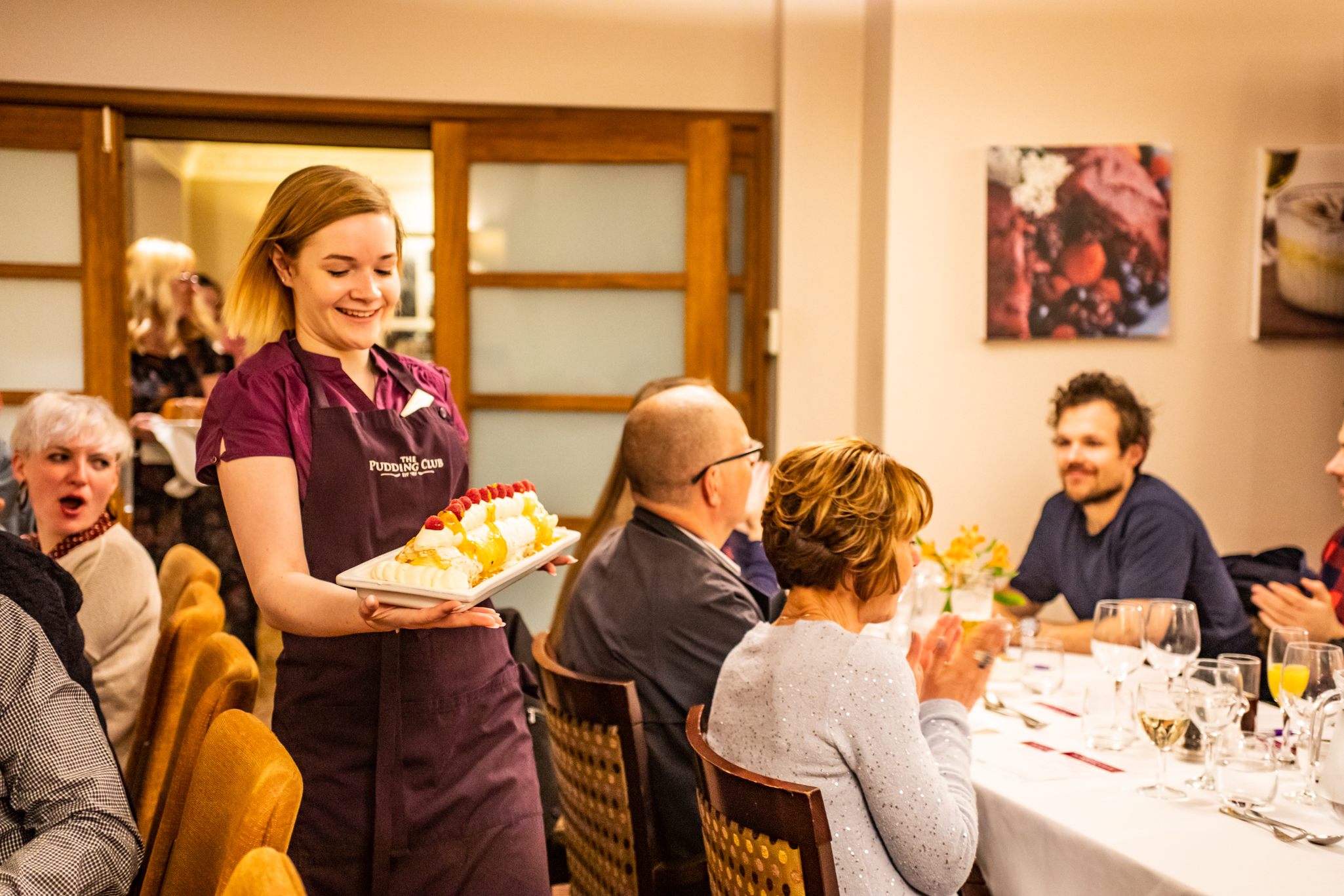
As the puddings came out to much fanfare, I sat next to the woman who had made the whole evening possible. For someone who’s made more 20,000 puddings over 25 years, Sheila Vincent, the Three Ways House pudding chef, isn’t the biggest fan. “I prefer cheesecake,” she told me as we tucked into our fourth dessert. Nevertheless, she’s been dubbed the “Pudding Queen” by her colleagues at the hotel.
It’s Williams who decides which puddings are served every Friday. Positively obsessed by pudding, she’s protective of its place at the Three Ways House. She’s also a purist, often consulting the definitive tome on the subject, Regula Ysewjin’s Pride and Pudding: The History of British Puddings, Savoury and Sweet. “Are you even British?” she barks when I confess that I’d never heard of summer pudding, a dessert made from sliced bread layered with berries and soaked in fruit juice.
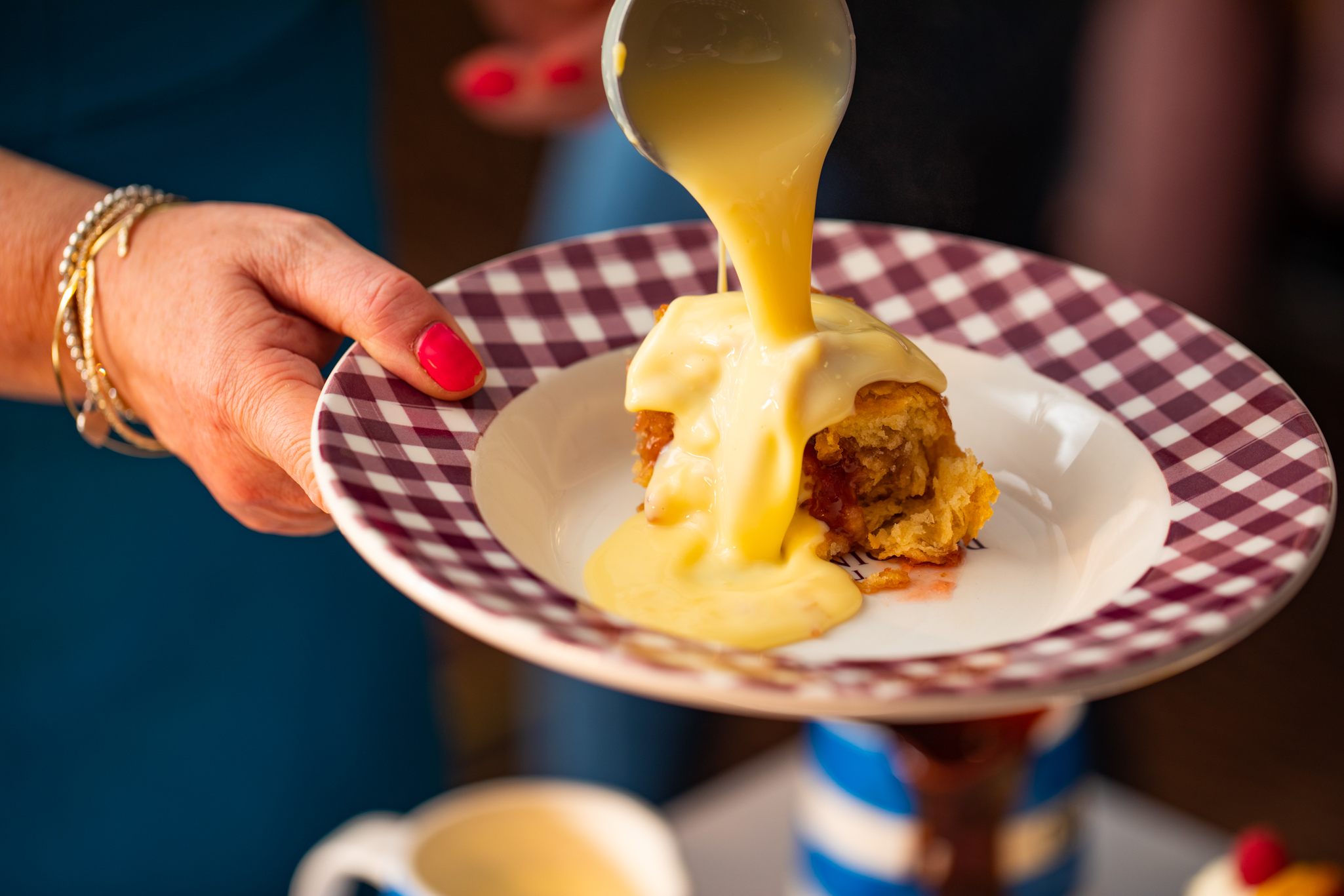
Over the years, each owner of the Three Ways House has recognized the value of the Pudding Club, both financially and as an institution, Williams says. The last owners, Jill and Simon Coombe, trademarked the name, and even decorated seven of the hotel’s rooms around a dessert theme. There’s a Spotted Dick room and Summer Pudding room, but I checked into the Chocolate Suite, where everything from the bathroom tiles to the cushions on the bed look like chocolates.
But to Williams, the Three Ways House’s pudding theme is about more than overindulgence. It’s about celebrating dishes that have fallen out of favor with the modern palate. While you’re more likely to see brownies and sundaes on menus across Britain, the Pudding Club features old classics, such as spotted dick and sticky toffee date pudding, always served with runny Bird’s brand custard. In fact, sticky toffee pudding features on the menu most weeks, and it’s usually the favorite pudding of the night.
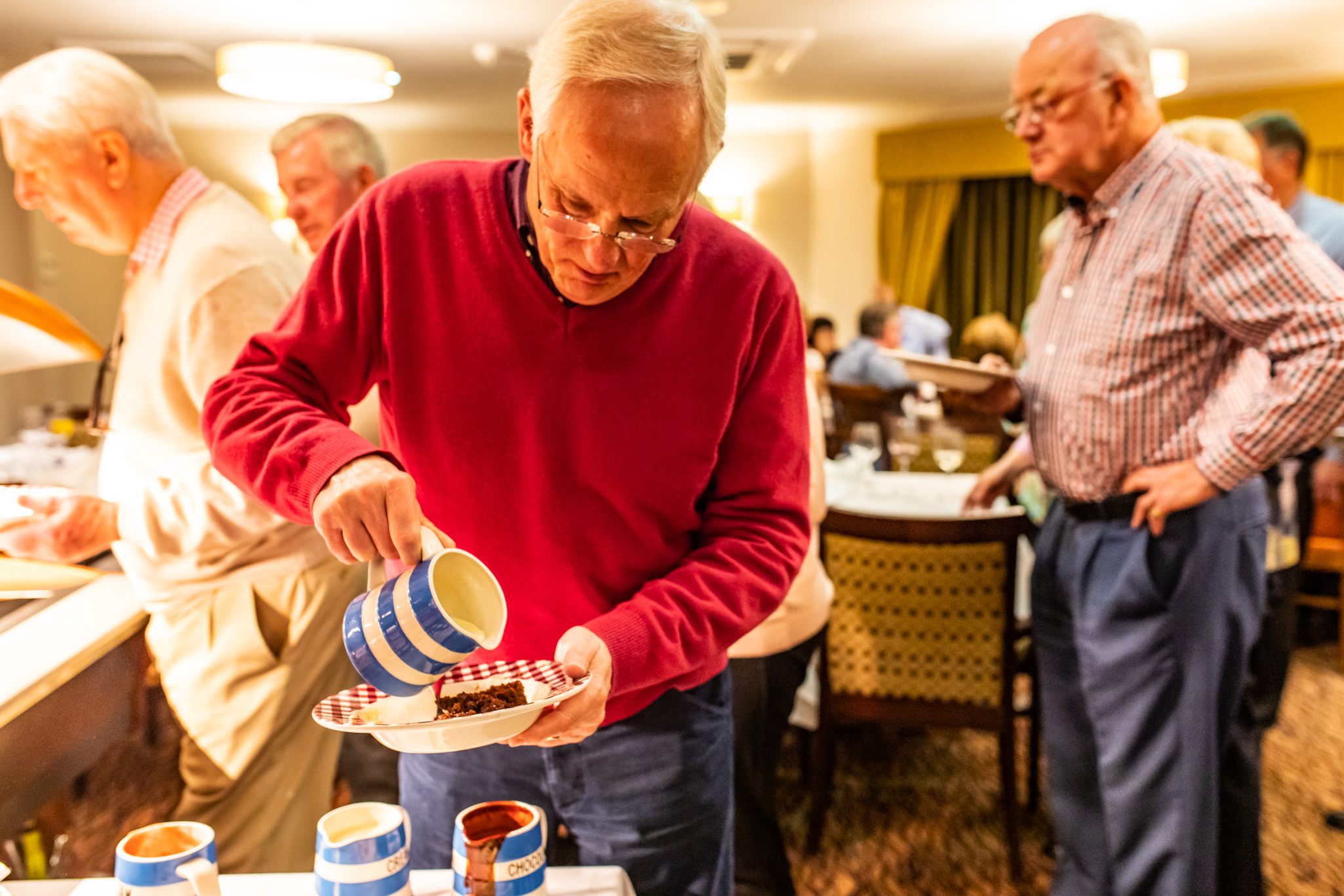
I feasted on said sticky toffee pudding, then a chocolate and orange sponge, followed by apple and rhubarb crumble. It soon felt like a sweet-based test of endurance. By then, the entire room was struggling to finish. After I got through the passion fruit roulade, rice pudding, and syrup sponge, I was faced with a jam roly-poly. While it resembled the log-like roulade in shape, instead of light meringue, it was made from wonderfully stodgy suet and filled with jam. Vincent stopped after course five, unable to take the sugar, but I soldiered on until I tried each and every pudding.
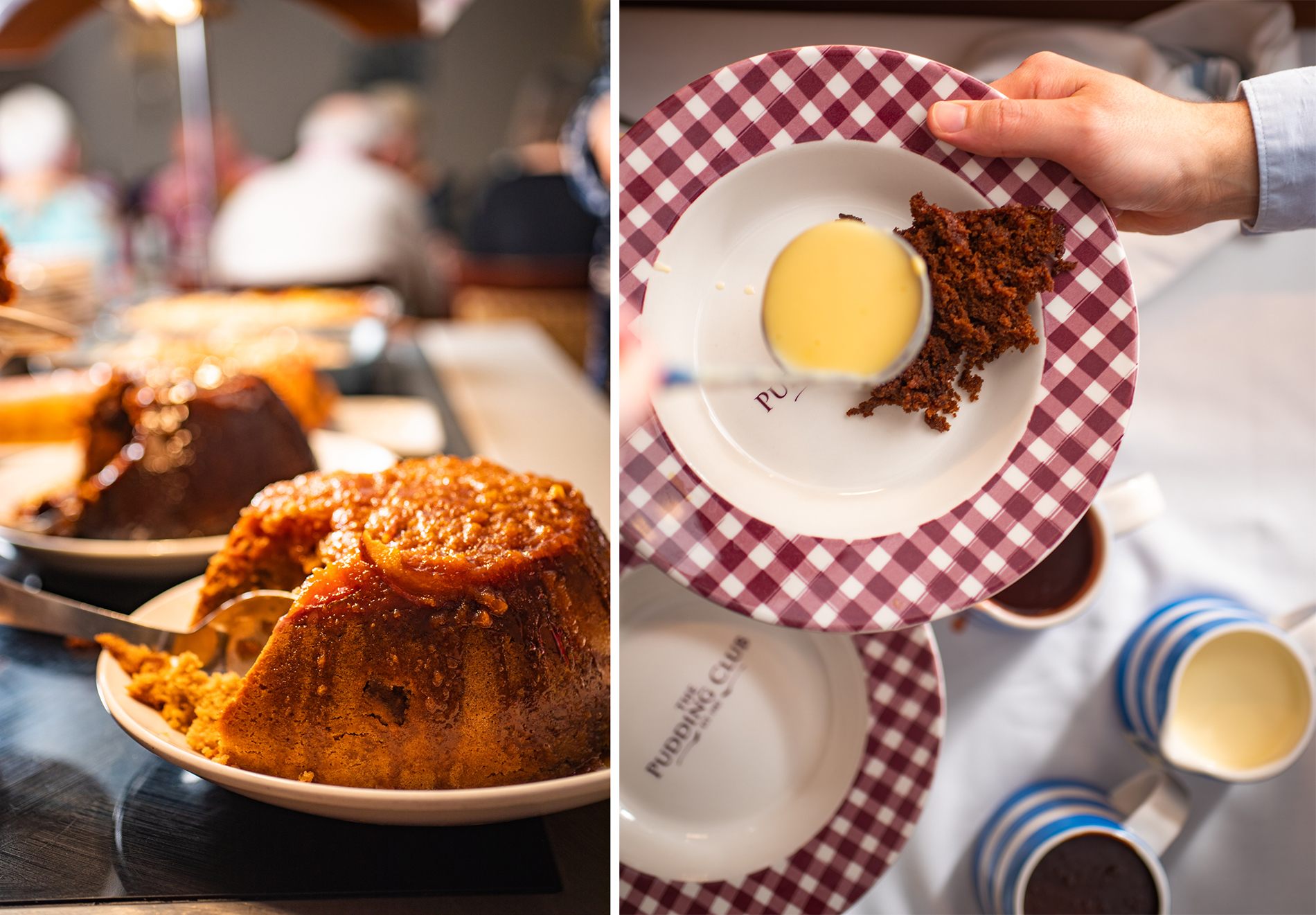
At the end of the night, each guest filled out a score sheet, voting for the top dessert of the evening. The sticky toffee came a surprising second to the jam roly-poly, a childhood favorite of many in the room. In fact, all of these puddings tasted of my own childhood, conjuring memories of school dinners and Sunday meals with my family. Puddings don’t only appeal to the British, either. The Club has even been invited to bring their puddings to New York and Tokyo, says Williams. As for myself, I only staggered as far as the Chocolate Suite afterwards, with the certificate proving my achievement in hand. Then, I fell asleep under a ceiling patterned to look like a box of chocolates.
Gastro Obscura covers the world’s most wondrous food and drink.
Sign up for our regular newsletter.





















Follow us on Twitter to get the latest on the world's hidden wonders.
Like us on Facebook to get the latest on the world's hidden wonders.
Follow us on Twitter Like us on Facebook